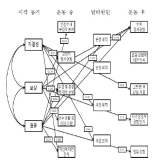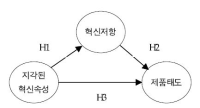
The Purpose of this study was to examines the effect of smart sport wear's innovation attribute on product attribute, focused on innovation resistance. Data were drawn from 253 college students and graduate college students in three different university. The model was tested using SPSS/PC ver. 18.0 for windows and AMOS 20.0 program. Data were analyzed using frequency analysis, reliability analysis, confirmatory factor analysis, correlation, and structural equation modeling techniques. The statistical significance level was set at a<.05. The results were as follows. First, perceived attributes of smart sport wear had a negative effect on innovation resistance. Second, innovation resistance had a negative effect on product attribute. Third, perceived attributes of smart sport wear had a positive effect on product attribute. Forth, innovation resistance partially mediated the relationship between perceived attributes of smart sport wear and product attribute.



PURPOSE This study aimed to identify the dimensions of sport brand authenticity and to develop a valid and reliable scale for measuring such dimensions. METHODS Along with a sequential mixed method design, qualitative researches were conducted (a literature review on brand authenticity and the inherent value of sport, 5 one-to-one expert interviews, and a Delphi survey of 10 researchers). Based on the qualitative research results, an EFA (n=304), 2 times CFA (1st: n=304, 2nd: n=311), and correlation analysis using the other scale (brand relationship quality, brand attachment, brand credibility) were conducted to test reliability, construct validity, and criterion-related validity. RESULTS In the qualitative research results, 8 dimensions with 36 items were extracted; however 6 dimensions (originality, connectedness, legitimacy, authority, sport spirit, and expertise) with 28 items were identified as appropriate structures from EFA and CFA, and the relations between all the dimensions and other scales related to consumer attitude were statistically significant in the correlation analysis. CONCLUSIONS The findings suggest that the scale in this study could provide a new and specific perspective on sport brand authenticity, which is constructed using a general aspect and a sport specific aspect, and an understanding of the concept of sport brand authenticity in other sport industries.

Purpose The purpose of this study was to verify their effectiveness as we develop and apply worksheets for improving life skills and resilience of collegiate Taekwondo athletes. Methods The study went through three stages: developing, applying, and evaluating. In the developing stage, literature review, expert meeting, and pilot test (n=25) were conducted to develop the worksheets. In the applying stage, 37 athletes participated in life skills program using the worksheets. Data were collected by survey and in-depth interview. In the evaluating stage, paired t-test, word cloud analysis, and inductive content analysis used to identify the effect of worksheets. Results First, the worksheets were composed of 3 stages (plan, acquisition, implementation) and 15 sessions including 12 factors of life skills. Second, the worksheets were applied in each phases such as planning, acquiring, and implementing. In the planning phase, they understood life skills knowledge and set goals. In the acquisition phase, students learned specific life skills’ strategies. In the practice phase, the acquired life skills were applied and practiced in real life and relationships. Third, the result of paired t-test showed that all the factors of life skills and 6 factors of resilience were significantly improved. In addition, word cloud and in-depth interviews revealed that the participants' cognitive and psychological changes were most prominent. Conclusions The life skills worksheets consists of 12 factors in 15 sessions and can be considered as an effective intervention tool for improving the resilience and life skills of collegiate Taekwondo athletes.

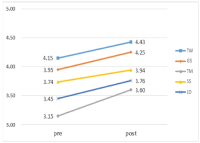
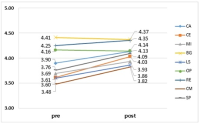


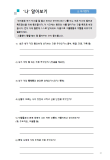
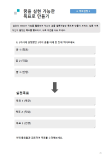
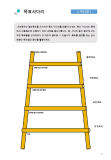

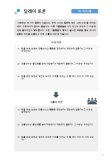
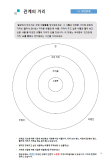
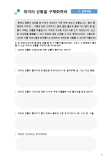


The current study aimed to investigate the relationships between leader-member exchange (LMX) quality, empowerment, and job performance of fitness center instructors. Data were mainly analyzed using a structural equation modeling technique with the AMOS program. The results, based on a paper-and-pencil survey with 263 respondents from 15 fitness centers, reported that LMX quality positively influences the level of empowerment perceived by subordinates while employee empowerment has a positive effect on job performance. However, LMX quality does not statistically influence self-rated job performance. Employee empowerment mediates the relationship between LMX quality and job performance.

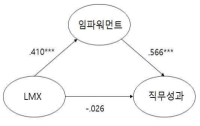
PURPOSE This study aimed to identify movement pattern differences in the running of youth soccer players with and without lateral ankle sprain (LAS) histories. METHODS A total of 12 participants were recruited and assigned to the LAS group or the control group. All participants were assessed for anthropometric data, and they filled in the subjective ankle function questionnaires. Then, reflective markers were attached to their bodies, and they were instructed to run at the preferred speed on the 9-m runway thrice. 3D joint angles for ankle, knee, and hip joints were exported, and their mean values and 95% confidence intervals were calculated. Ensemble curve analysis was conducted to compare running kinematics between the groups. RESULTS The LAS group exhibited fewer dorsiflexion angles and more inversion angles compared to the control group. Excluding the dorsiflexion deficits and more inverted ankles, there were no significant differences between the groups. CONCLUSIONS Although the ankle kinematic patterns found in this paper are not considered LAS risk factors, it will be able to identify precise LAS risk factors with prospective design (e.g., lower extremity movement patterns) as well as intrinsic risk factors.
PURPOSE This study aimed to apply a team-building program for preparing the national archery team for competition in the Olympics. METHODS To achieve the purpose of this study, six national archers (three men and three women) were included. The team-building program was applied for a total 6 sessions (one session per week). Group cohesion and efficacy were measured three times before, after, and at a later application of the program. The collected data were analyzed with the Friedman and Wilcoxon signed-rank tests, which are nonparametric statistical techniques for data analysis. In addition, an in-depth interview for qualitative data was conducted for each archer to explore the effects and changes resulting from participation in the program. RESULTS The results of the study are as follows: first, the levels of team cohesion and efficacy in the national archery team increased after the implementation of the program compared to those in the pre-implementation state. Furthermore, high levels of team cohesion and efficacy were maintained at the follow-up measurement. Second, the archers recognized that closeness and faith in one another increased more between team members. Furthermore, there were positive changes in team communication, atmosphere, cohesion, and efficacy during team matches. CONCLUSIONS The team-building program applied in this study was found to have a positive effect on various factors related to team cohesion, such as team communication and team atmosphere. Therefore, future studies should consider developing a team-building program that can contribute to improving team sport performance for different sports and the effects of the program should be examined using various methods.
The objective of this study was to examine the relationships among preferred and perceived leadership behavior, their congruence, and satisfaction with leadership based on Chelladurai's(1978) Multidimensional Model of Leadership(MML). To achieve the study objective, 210 professional dancers from 6 professional dance teams located in Seoul and the suburbs participated in this study. For hypotheses testing, descriptive statistics, hierarchical multiple regression analyses, and a confirmatory factor analysis using SPSS and AMOS were used. Results showed that the congruence between preferred and perceived leadership behavior did not have statistically significant influence on dancers satisfaction. The results of the study were inconsistent with what MML suggested. However, the results were quite consistent with empirical evidences of previous studies that investigated the influence of the congruence between preferred and perceived leadership on satisfaction.
PURPOSE The purpose of this study was to investigate the effects of perceived organizational support of high school football players on innovative performance. Of particular note, we focused on examining the mediation effect of self-management between perceived organizational support and innovative performance. METHODS A total of surveys returned was 137 and the data used for the final analysis was 130. The data was processed using SPSS 21.0 statistical program and Lisrel 9.2 for confirmatory factor analysis. RESULTS The results of the analysis were as follows: first, perceived organizational support of high school football players had a positive effect on players’ self-management. Second, players’ self-management had a positive effect on players’ innovative performance. Third, players’ self-management fully mediated between perceived organizational support and players’ innovative performance. CONCLUSIONS The study concluded that maximizing both perceived organizational support and self-management of the high school football players are necessary in order for the organization to achieve high level of innovative performance.
Purpose The purpose of this study was to analyze the relationship among emotional leadership, coach trust and athletic satisfaction of university. Methods 288 university soccer players were surveyed on the emotional leadership questionnaire, coach trust questionnaire and athletic satisfaction questionnaire through convenience sampling method. SPSS 23.0 and AMOS 23.0 were used to achieve the purpose of this study. Frequency analysis, confirmation factor analysis, reliability verification, correlation analysis and the structural equation model analysis were performed. Results First, emotional leadership had a positive effect on coach trust of university soccer players. Second, emotional leadership had a positive effect on athletic satisfaction of university soccer players. Third, coach trust had a positive effect on athletic satisfaction of university soccer players. Finally, coach trust mediated the relationship between emotional leadership and athletic satisfaction. Conclusions Emotional leadership was a leadership that can efficiently increase coach trust, and leaders must communicate with players through emotional effort and team operations with goals of athletic satisfaction and happiness rather than wins and losses were required.
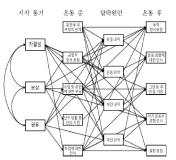
The purpose of this study is to explore the drop-out process of student-athletes and propose valuable policy ideas related to interscholastic sports. For this purpose, we surveyed 560 middle and high school drop-out student athlete's in 13 areas and finally 400 completed surveys were used for the study. To set the scales used for the study and test the reliability and validity of the scales, factor-analyses, Cronbach's alpha, and interfactor correlations were conducted using SPSS. For the main test, the paths analyses were carried out with AMOS program. As a result, we found two paths which had major effects on the drop-out process of student-athletes, self-efficacy path at the point of starting athletic career and negative relation path during athletic experiences. Based on these results, the following policy ideas were proposed. First, student-athletes should be able to join and leave athletic teams voluntarily. Second, the comfortable environments were provided to promote student-athletes' positive emotion toward athletic teams.

